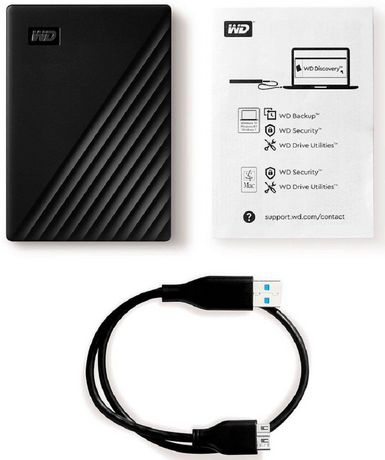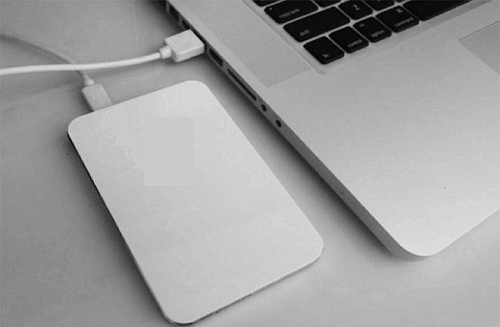

- #Computer not reading my passport external hard drive how to#
- #Computer not reading my passport external hard drive drivers#
- #Computer not reading my passport external hard drive update#
- #Computer not reading my passport external hard drive driver#
- #Computer not reading my passport external hard drive full#
#Computer not reading my passport external hard drive driver#
The driver should automatically loadĬheck for the USB drive in Windows Explorer Wait for 1 minute and then reconnect the USB cable. Press and hold (or right-click) the USB external hard drive with the issue, and select Uninstall.Īfter the hard drive is uninstalled, unplug the USB cable. Select Disk Drives from the list of hardware Select Device Manager from the returned list. Select Start, type Device Manager in the Search box This method resolves issues where the currently loaded USB driver has become unstable or corrupt. Method 1: Uninstall and then reconnect the external hard drive If the first method does not fix the problem, proceed to the next. To resolve this issue, follow the steps in the methods below in the order listed.
#Computer not reading my passport external hard drive drivers#
Your PC motherboard may need updated drivers Your external drive may be entering selective suspend Your USB controllers may have become unstable or corrupt Windows may be missing other important updates hardware or software issues
#Computer not reading my passport external hard drive update#
Your PC requires an update for issues that may conflict with a USB external hard drive and Windows The currently loaded USB driver has become unstable or corrupt This issue can be caused if any of the following situations exist: If you are trying to log onto it, use your current account username and password. If its a WD drive, try Mapping the drive in File Explorer. If you see your drive listed there, but no drive letter, right click itĬhoose a drive letter - try choosing letters near the end of the alphabetĮxit Device Manager, restart then check if its detected.

If you have fixed the issue using a different method, post it in the comments and let us know.Check if the drive is assigned a drive letter. Hopefully one of the methods mentioned above will get you to a state where you don’t have to disconnect your USB hard drive in order to boot Windows properly. In theory, it shouldn’t really matter what port you connect it to, but for some odd reason it has worked for some people. The chances are slim that it will work, but you might be one of the lucky few where it actually works. Method 6 – Different USB PortĪs we’re running out of options now, you can also try just unplugging the HD and plugging it back into a different USB port. If you want to be hardcore, you can always use a program like dban to wipe the drive completely.
#Computer not reading my passport external hard drive how to#
Read my post on how to format an external hard drive in FAT32 format. I would suggest trying FAT32 since it’s an external hard drive and not checking the Quick Format box. If you have connected your USB HD to a different operating system like OS X or Linux or if it just happens to be formatted using a different file system that is causing issues with Windows, you can format it fully and see if that resolves the issue.
#Computer not reading my passport external hard drive full#
In this case, you can copy off all the data and perform a full format of the external hard drive using the Windows format tool. If you’re only having the boot hang when using one external USB hard drive and no other USB device, then it’s definitely some issue with the hard drive. If that doesn’t work, you can try something a little more aggressive, which is method 5. Sometimes when you are copying files between computers, etc., some system files can get copied to the external drive and therefore Windows thinks your USB device is a boot device. If by chance there happens to be a boot.ini or other such files, try to delete them and then restart your computer. You should also open your external hard drive in Windows Explorer and check to see what hidden files are stored in the root directory. Read my post on how to change the boot order in Windows. Give the system a reboot and see if you’re stuck at the black screen or not. Make sure to move USB-HDD or USB all the way to the bottom. The boot order screen is usually somewhere on one of the advanced options pages, so you’ll have to browse around a little to find it. If USB somehow was moved up in the boot sequence, then you’ll also run into this problem whenever you connect any USB hard drive to your PC.

While you’re in the BIOS, you should also check the boot order. If Auto does not work, you can try Disable, but be cautioned that you’ll not be able to use your mouse/keyboard before Windows loads. The other thing you can try instead of disabling is to set it to Auto. Some people have suggested disabling it, but that also means you won’t be able to use a USB keyboard or mouse when the computer is booting up, which could be a problem if Windows stop loading one day and you have to navigate the DOS prompts. Another possible way to fix the issue is to go into the BIOS and adjust the settings for Legacy USB Support or USB Device Legacy Support.


 0 kommentar(er)
0 kommentar(er)
